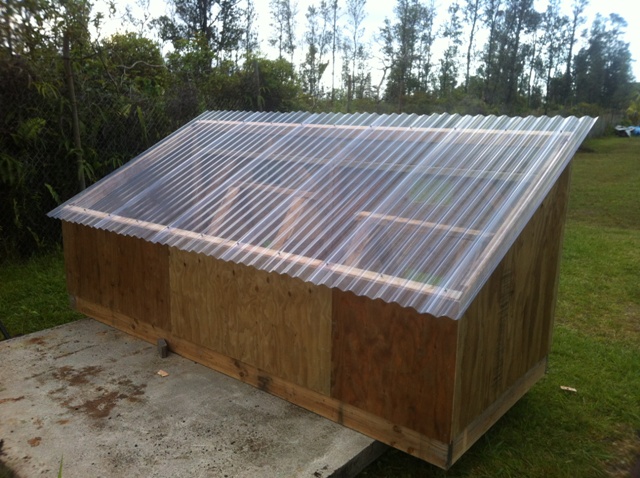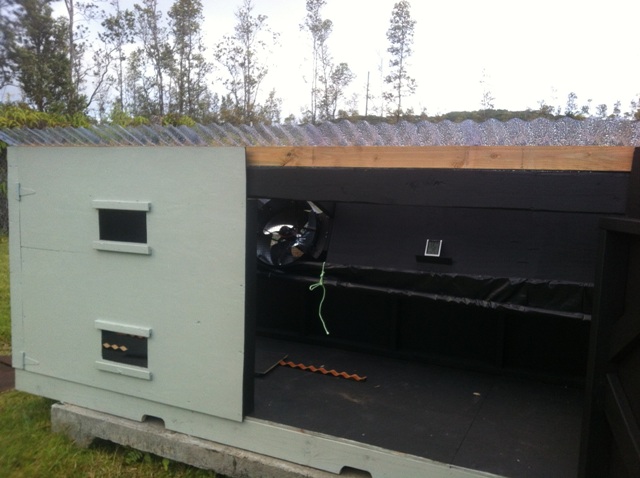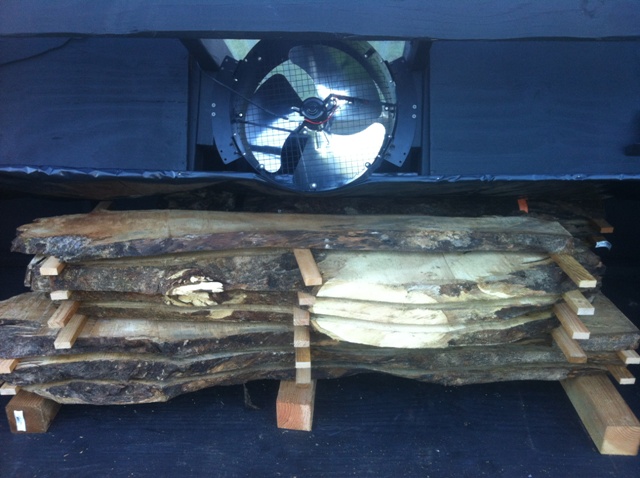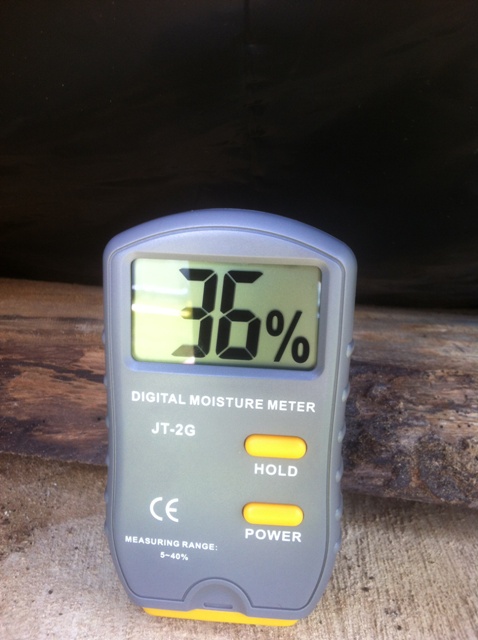Question (WOODWEB Member) :
I just wanted to share a few shots of a small solar kiln I made last summer with the help I got reading a heap of posts and following links from this forum. Thanks to everyone for sharing their knowledge.



Forum Responses
(Sawing and Drying Forum)
From Contributor Y:
Thanks for posting! Foam insulation? What temperature can it reach? How do you monitor moisture content? I might consider putting stickers a little closer together and arranging boards so that stickers can be lined up straight.

The best results are when you can direct the flow of air straight through the stickers and out the other side, up and over the absorber and back through the pile again. This will make the best use of the electricity going to the fans. Ideally if you can have fans the entire length of the stack and the stack baffled to funnel the air so it only draws through the pile that is more efficient and helps maintain a more even drying. You will need to keep the wood out of the sun as well. You can get surface checking, uneven drying on the top of the top layer. Even an upper end moisture meter is only good for 4/4 and still will not represent a moisture gradient in the material properly. On 8/4 the reads 25% still could be 50% in the middle.
You've got the bones of a good system. I have a similar system and itís very low tech. I am in Hawaii as well. I get summer daytime highs of 145 and with overcast days I still can see 110-120. It depends on the rh in the kiln as well. Many people here do not even agree that wood needs to be kilned dried. If youíre on the Big Island you can come over and see what I have. It's not much different but I have an absorber on top of the pile that blocks the sun. The air is drawn across it through the fans then the pile. The absorber is loose ply (see, low tech) painted black. It overhangs the back of the pile and sets on top of the row of fans caulked with an old moving blanket . I also have a 65qt dehumidifier I use to keep night time or during rainy days rh down after the material bottoms out at 9-10%. I find you still need to equalize to 6-7% to make sure all the load is below 9%. For quality woodwork even in the tropics you still need to get below 10%. Either way it's a lot of fun, increases your understanding of the material you use and hopefully creates better material than you were used to using. If you air dry sufficiently it greatly reduces much of the risk of damaging material.